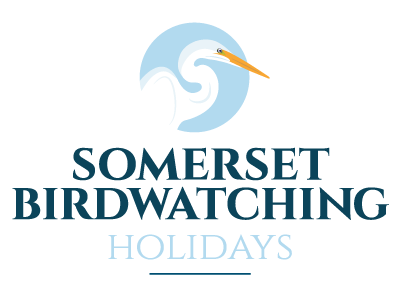Mission accomplished
It’s an awful day. Mid-January, cold, wet, dismal. Many shades of grey. Many kinds of rain. But oh my goodness, it’s a beautiful day too. Because when I’m having a ‘nature adventure’, the weather is always permitting, and all weathers are permissible!
I’m on a trip with the Somerset Birdwatching Holiday company and we’re starting this second day at the Wildfowl and Wetlands Trust Reserve at Steart Marshes. There’s plenty of interesting ‘hard’ info available https://www.wwt.org.uk/wetland-centres/steart-marshes about the creation of this fabulous place, but here I want to honour its softer side… although soft is not perhaps the first word that comes to mind as I bedeck myself in waterproofs, wellingtons, and headgear. I step from the warm minibus and turn to face the elements.
Immediately my senses are assailed. The south-westerly wind whips around my ears but I can still hear the wild cries of lapwing, and gulls; the whistles of teal and wigeon; the haunting call of a different unknown bird as it powers through the squalls. The rain has covered my binoculars and specs in a moment but I can still see the reedbeds all around, the reeds’ frayed heads dancing from side to side. I can still see the bones of stunted hawthorns, cornus shrubs, and teasel heads. Here, the sky is vast. The expanses of reedbed and water are vast. I know, intellectually, that I live in a limitless universe. Here, I feel it. I tip back my head, open my mouth and taste the rain, and that distinctive saltmarsh flavour. The smell too… all habitats have their specific smell: meadows, woodlands, moors… but those of estuary and saltmarsh seem to penetrate deeper into my psyche.
We splash along muddy tracks to reach the relative comfort of the new double-glazed hides. The hide is so well stocked with interpretation boards, guidebooks, and even binoculars-on-a-rope, I don’t immediately look out across the wetland itself. But when I do…
So many birds. In the water. Out of the water. Flying low across the water. Flying around the water. The lapwing, teal and wigeon I heard earlier. Other waterfowl and waders, including a host of golden plover. A flurry of excitement as a raptor puts hundreds of birds into the air. It’s a marsh harrier. Minutes later, a peregrine tries his luck.
I can’t identify all these birds, but Graeme, and Stephen, our two fun-and-information-filled guides, can and do. Although I love being out alone on my nature adventures, and love simply experiencing wildlife and landscape without necessarily naming-and-claiming, I also appreciate the massive amount of knowledge guides like Stephen and Graeme have, and the stories they tell about the birds, as well as their identification skills.
I’m reluctant to move on, but today has a special focus for me. I understand why birders, and birding holidays, talk about ‘target birds’, but it’s not a phrase which sits easily with me. Not least because of other connotations of ‘target’! Today, however, I have officially joined the birders club: today I have a target bird. I’ll even give it the official latinate terminology: Grus grus - the Common (or Eurasian) crane. Amazing as it is, I won’t tell the full story of the reappearance of the crane in Norfolk after its extinction around 400 years ago, but there is also an ongoing reintroduction programme on the Somerset Levels, and our next stop is the area where they are most likely to be seen.
With the continuing wild weather, the wild landscape, and my pre-crane excitement, I’m already in an otherworldly state. But as we drive deeper into the Levels, I journey deeper into that altered state. Outside the square of van window, all is pollarded willow trees and an endless mosaic of water-logged and water-edged fields. Swans and little egrets are everywhere - competing in their whiteness with the blackness of crows, jackdaws and rooks.
For several hundred yards we drive alongside the River Parrett, below the level of the water. It’s curious enough to think that parts of the Levels are below sea level, but to actually drive along a road looking upwards to the river flowing past is quite a disturbing experience. I make a note to myself to return on another occasion, alone, to walk this landscape.
Our first stop to scan for crane is probably in the heaviest rain and heaviest wind gusts we have encountered so far, and although Stephen and Graeme valiantly erect their telescopes on uneven, swampy ground, it’s apparently a crane-free zone. Cranes are large birds, but they are mostly grey, and even if present, possibly hunkered down. Poor G&S (I feel sorrier for them than for me) try desperately to make lumps of grey vegetation into cranes; to make distant crumbling farm buildings into cranes, and even herons into cranes, but it remains a crane-free zone.
And then… and then there are two! Two real cranes. But they are distant, and beyond the abilities of my laser-surgeried and myopic eyes to see. They soon fly off, but G&S have a cunning plan, and we drive on a little further to a bridge offering a slightly higher vantage point. We all pile out again, and pile into the mud again. Scopes are re-erected. A bit of light scanning and the birds are found. Three, this time, walking and feeding. Or so I am told. Still, I cannot see them, but then the motionless grey mass I’m staring at in the scope lifts up its long neck and shows the red patch on its crown. A moment later, it lifts into the air, followed by two more. Three cranes indeed. Mission accomplished. Target achieved. What’s for lunch?
Daphne Pleace
January 2020
